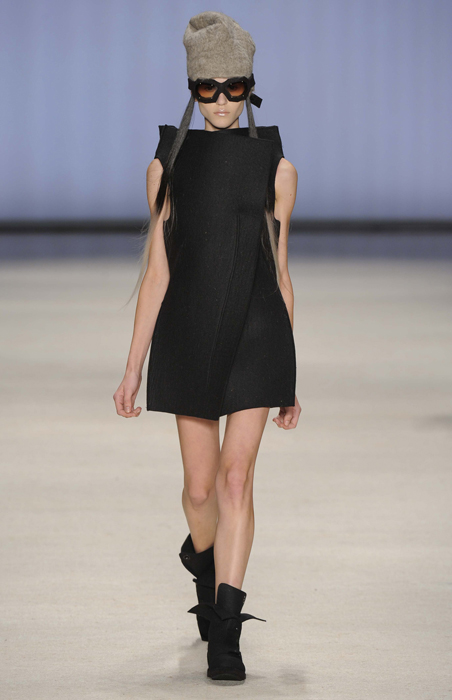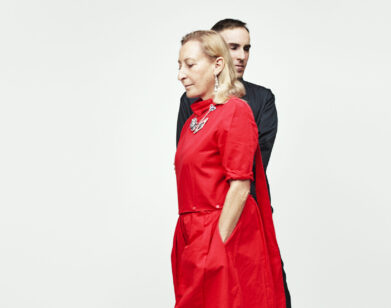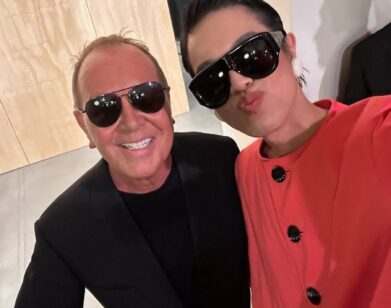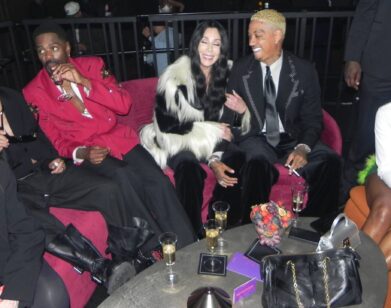Doctor’s Orders

Sports medicine and fashion would ordinarily make strange bedfellows, but Brazilian designer Oskar Metsavaht is an exception. The avid skier, snowboarder and mountain climber–and former sports physician–made his first coat (for an expedition to the Andes) in the mid-1980s. The cozy garment was so well received by his mountaineering chums that Metsavaht was encouraged to launch a full line of active wear in 1989. He called it Osklen, and the clothes were suited for outdoors adventurers, like the man himself. In recent years, the doctor-turned-designer has expanded his line to beach and ready-to-wear, combining urban sensibility with a tropical flare.
This fall, Metsavaht’s architectural his-and-hers looks aim to span the seasons by featuring raw, sustainable fabrics. He also called upon his previous Spring collections to do hooded winter coats and structured dresses in pink, aqua and jungle green floral prints. Wool-felt bikinis and bodysuits with geometric, even robotic shoulders call to mind sexy, organic Storm Troopers. Others, like a stiff, wide-collared cream coat and matching men’s mini-shorts, are more R2D2. Ski goggle-inspired sunglasses and long, scrunched gloves are embellished at the top with sharply square bangles. A vest wraps around the body to become a backpack, epitomizing the doctor’s conceptual, utilitarian method.
KATHARINE ZARRELLA: How does one go from working in sports medicine to creating high-concept attire?
OSKAR METSAVAHT: I had the opportunity to get into the culture of medicine—the art and the science—and gain knowledge and experience by observing human behavior and healing. Fashion is an expression from observing human behavior and designing for it.
ZARRELLA: What was the inspiration behind this collection?
METSAVAHT: The collection is called Tropic of Capricorn, for the imaginary line that bisects the southern hemisphere, and which crosses the city of São Paulo. We have a true winter in this subtropical region, and I wanted people to understand that Brazilian designers aren’t just beach colors and bikinis. São Paulo is a very sophisticated city, as others in the world, with an impressive architecture.
ZARRELLA: Are your clothes inherently Brazilian?
METSAVAHT: Definitely not. I am Brazilian, and I live at Ipanema Beach. But my collections are related to my lifestyle, which involves other countries. To me, fashion is more about a designer’s intent and personality.
ZARRELLA: How did you come up with the “backpack vest” concept?
METSAVAHT: Backpacks and technical clothing are part of the Osklen’s DNA. I like to bring it always in new ideas and forms into details to the clothes. This piece was my design team’s idea, not mine. I loved it. It was one of our best approaches to the hybrid of accessory and clothing.
ZARRELLA: What inspired your winter bodysuits?
METSAVAHT: I was holding a thick piece of felt, 50-by-50 foot, and I used it to cover myself, as protection from the cold and wind, to repeat, as I imagine, the actions of the first humans, millions of years ago. This was the starting point for the silhouette: curves, straight lines, high collars, bold shoulders.
ZARRELLA: Was working with eco-friendly materials part of your heritage?
METSAVAHT: It’s part of the fashion industry’s responsibility to spend more time designing and developing eco-friendly materials, and to use them in our collections in a coherent way. I don’t think a brand must be totally “green” yet, because environmentally sustainable production technologies are still in the developing stages, and they’re limiting. 11 years ago, I founded the e-Fabrics project, in association with the Instituto-E (a group of universities, research institutions, fashion companies and NGOs) to help to develop new materials from social and environmental projects in Brazil.
ZARRELLA: Why did you choose to feature wool-felt flip flops?
METSAVAHT: That’s easy: summer meets winter.






